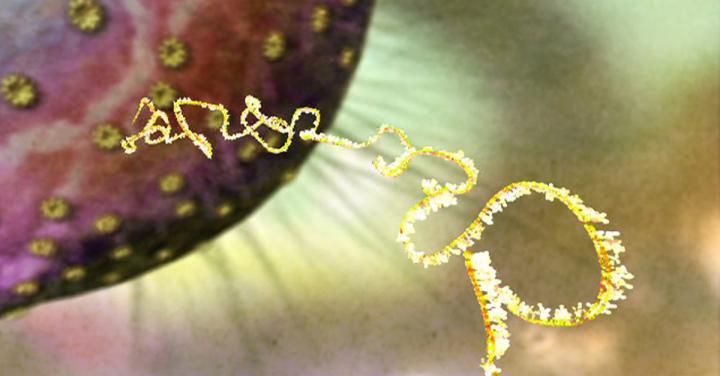
Credit: Walter and Eliza Hall Institute, Australia
Australian and US researchers have made a breakthrough in understanding the structure of a key genetic molecule, called RNA, and revealing for the first time how these changes impact RNA’s function.
Publishing in the journal Nature, the research team developed a bioinformatics technique to resolve separate structures of RNA rather than viewing them as a ‘blur’ that averaged multiple structures. This underpinned their discovery that the structure of RNA can influence how cells function.
RNA is a DNA-like molecule that encodes genetic information. Certain viruses – including HIV and SARS-CoV2 – use RNA as their genetic material. The team were able to apply the techniques they developed to reveal how the structure of HIV’s RNA genome influences which proteins the virus produces.
The international collaborative team was led by Walter and Eliza Hall Institute researcher Dr Vincent Corbin together with Mr Phil Tomezsko and Professor Silvi Rouskin at the Whitehead Institute for Biomedical Research, Boston (US). The research team also included the Institute’s Computational Biology Theme Leader Professor Tony Papenfuss and mathematician and PhD student Mr Lachlan McIntosh.
At a glance
- – RNA is a molecule that carries genetic information, controlling how cells function.
– A collaborative research team has used advanced computational methods to detect different structures of RNA, which until now could not be distinguished.
– Using HIV as a model system, the team discovered that different structures of RNA influenced how the virus behaved. This is the first time changes in RNA structure have been shown to influence how this molecule controls cells’ function.
RNA’s shifting shapes
RNA is a molecule found in all living things that carries genetic information. RNA is an important regulator of how cells function, directly controlling which proteins are produced in cells, and can also switch genes on and off.
RNA molecules have a two-dimensional structure which influences how the genetic information contained within them can be accessed, said Dr Corbin, who led the project’s bioinformatics research.
“The big question in RNA biology has been whether RNA molecules have a single, constant structure, or whether they can shift between different structures – and what this means for the function of a particular RNA molecule,” he said.
“Our collaborators, led by Professor Silvi Rouskin, developed a technique for deciphering the structure of RNA molecules. We wanted to understand whether what we were detecting was a single structure of RNA, or an ‘average’ structure that blurs multiple different structures together.
“It’s a bit like seeing red and yellow stripes, or blurring them together and thinking you can see orange,” he said.
By developing a computational algorithm, the team were able to detect and measure the amount of different RNA structures. “We could detect these both in a test tube and in living cells, so we next looked at whether these structures influenced how RNA functioned,” Dr Corbin said.
Changing RNA function
When RNA is produced in cells, it starts in a longer form that is ‘spliced’ or trimmed to remove unwanted parts.
“RNA splicing can influence how it encodes proteins,” Dr Corbin said. “There are many examples of how altered RNA splicing influences how a cell functions – and in some cases, changes in RNA splicing have been associated with cancer or neurodegenerative diseases.”
Certain viruses use RNA for their genome, including HIV and SARS-CoV2 (the coronavirus that causes COVID-19). In the case of HIV, RNA splicing influences which protein the virus produces – which changes at different stages of the virus’s lifecycle.
“Using the HIV genome as a model system, we looked at whether RNA structure influences how HIV’s RNA is spliced. We discovered that RNA structure was a critical determinant of RNA splicing in HIV, and influenced which viral proteins were produced,” Dr Corbin said.
“This is the first clear evidence of how RNA structure can control RNA function. The techniques we have developed have opened up a new field of research into the role of RNA structure in regulating the function of cells.”
Professor Papenfuss said the research showed how finely tuned biological systems are. “This study how very subtle changes in one tiny molecule can have big implications for the function of a virus. By using computational biology to unravel these changes, we’ve made a significant discovery about how viruses – and potentially human cells – function, which may underpin future discoveries about health and disease.”
###
The research was supported by the US National Institutes of Health, the Smith Family Foundation, the Burroughs Wellcome Fund, the Australian National Health and Medical Research Council and the Victorian Government.
Media Contact
Eva Frederick
Science Communications Officer
Related Journal Article
http://dx.




